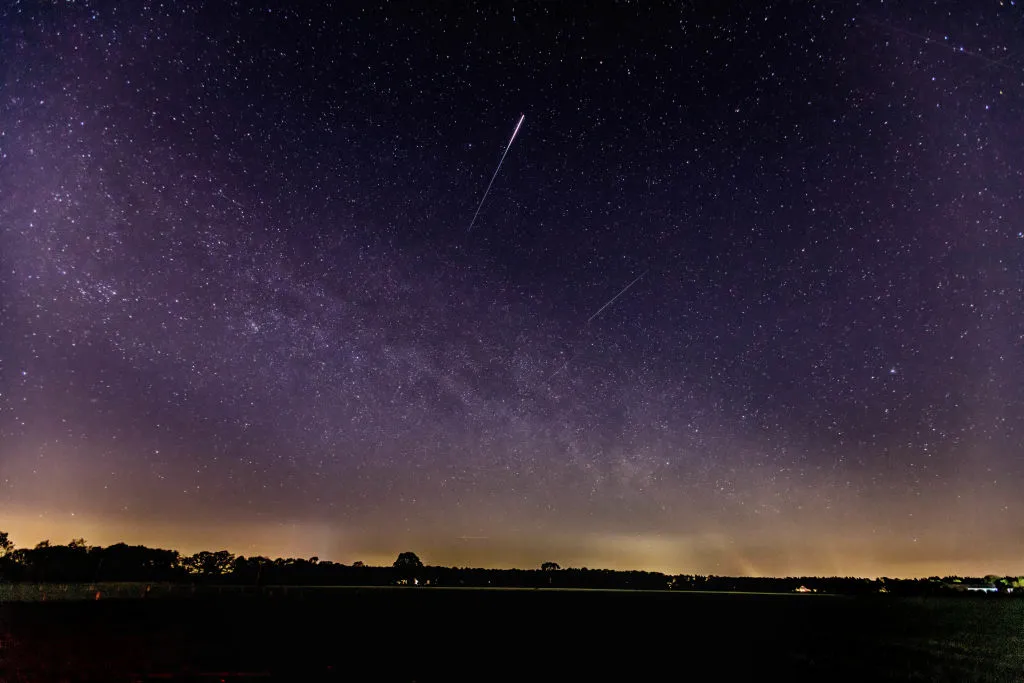The Southern Delta Aquariid meteor shower peaks on 28–29 July 2022 and the best time to see it will be 28–31 July, midnight BST (23:00 UT) through to 03:00 BST (02:00 UT).
This year the Moon will be absent from the sky, as it approaches the new phase on the afternoon of 28 July.
This leaves the sky dark for Southern Delta meteors, making it a great shower to spot this week and into the weekend.
Well, when we say dark, we mean as dark as it ever gets at the end of July!
Find out what the Southern Delta Aquariid 2022 meteor shower is, when it's happening and how best to see it.
Find out more about the science of meteor showers in our guide What causes a meteor shower? And for regular observing advice delivered directly to your email inbox, sign up to receive the BBC Sky at Night Magazine e-newsletter.

For those in the north of the UK, the sky still carries its characteristic deep blue colour, never reaching proper astronomical darkness at all.
Even from the far south of the UK, proper darkness is rather brief.
Don’t let this detract you from enjoying the shower though, as bright trails will make themselves known.
How to observe the Southern Delta Aquariid meteor shower

The Southern Delta Aquariids (SDA) shower is active between 12 July and 23 August, reaching peak activity at the end of July, on the nights of 28/29, 29/30 and 30/31 July.
It’s well worth observing across all three dates if you can.
Peak rates typically reach a zenithal hourly rate (ZHR) of 16 meteors per hour but, as we often say, ZHRs can be misleading.
The zenithal hourly rate represents the number of meteors expected to be seen per hour under perfect viewing conditions with the shower radiant – the region of sky from where the shower meteors emanate – directly above your head.
Such conditions are rarely met and this is the case with the SDA, its radiant sited near Skat (Delta (γ) Aquarii), which doesn’t get very high from the UK.
To observe the Southern Delta Aquariid shower, find somewhere dark and sit or lie back, looking up at the sky; an altitude of 60˚ (two-thirds up from the horizon) is ideal, in any direction.
As the nights are short in July, an all-night watch still allows you to get some sleep after the session.
Fancy photographing the Southern Delta Aquariids? Read our guides on how to photograph a meteor shower and the best equipment for photographing meteors.
This guide originally appeared in the July 2022 issue of BBC Sky at Night Magazine.
